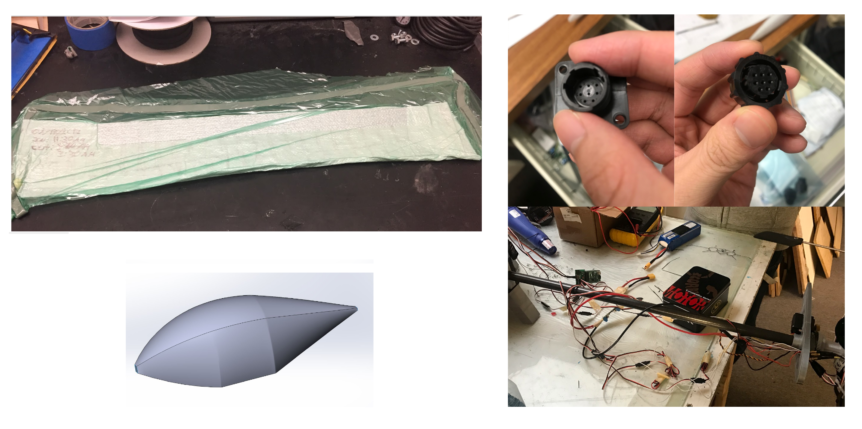Midterms are still hitting our members at UAV Forge so our progress has been slow.
Propulsion team was tackling some issues with in the plane’s stability. The PixHawk controller for the tilt rotors was causing the plane to tilt more extremely than expected. This was fixed by changing the PixHawk’s compensation polarity sign. Another issue was found with the TH-2 mixer. The mixer wasn’t sending the control signal to the tilt servo properly. They will work towards a solution to this issue.
The Mechanical Design team finished the frame for Fabrication team to 3D print. They were having issues with the FEA testing of the frame due to errors in meshing in SolidWorks. They are continuing to make the fuselage more stream-lined and they are beginning to design the interior housing for the electronics that Avionics are working on.
The Fabrication team is continuing to produce wet composite lay-ups of the control surfaces. They ran into some sizing issues with the material where sanding didn’t fix the issues so they must make new foam cuts of the control surfaces. Chieng, our Lead Engineer, suggested that the team should do the lay-ups then sand for a smoother end product. The Fabrication team is planning to go to Fab Works for laser cutting later.
Ground Station has produced new widget features, including StatusWidget, TimerWidget, and ConnectionWidget. They have integrated the old Mission Execution GUI to their new Widget library also. After much updating, the team performed code analysis and found some issues, including memory leaks. For the next week, the team will be working on a GraphWidget and will start outlining the code for expected network behaviors between the UAV and Ground Station.
Avionics is still having library issues with running PX4 (PixHawk) with Windows 10. They may switch to Linx instead. Next, the completed their initial battery bus design, switch-circuit, and are ordering parts to build the prototype. They’ve had some issues with order parts, such as the new connectors that don’t have the pin contacts (pictured above). Finally, they finished the servo layout for the left tilt rotor.

